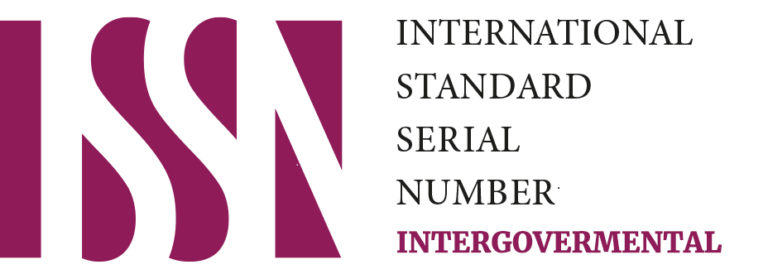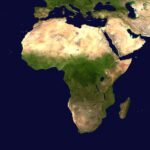ABSTRACT
This paper looks at why free trade is encouraged by the World Trade Organization (WTO) and the International Monetary Fund (IMF) despite causing so much poverty and inequality globally. Using published research, it argues that free trade has increased poverty and inequality globally through job outsourcing, degradation of natural resources, and poor working conditions. These organizations support free trade because they are controlled by economists whose role in trade debates is especially pernicious and less honest.
INTRODUCTION
Every time one opens the television, reads a newspaper, or listens to the radio, one encounters the concept of free trade. The food we eat, the clothes we wear, and even the digital programming we consume all point to this beautiful idea of free trade – a policy that does not restrict imports or exports. Free trade is supposed to lower prices for consumers, raise the economy in developed and developing countries, and eliminate unfair global commerce barriers. Many proponents of free trade argue that it is the fastest way to reduce poverty. Increased international trade has been widely presumed to make households in developing countries better off.1 Over the past decades, developing countries have implemented large-scale trade liberalizations and become integrated into the global trade system with the false hope that it will alleviate poverty and inequality.
The conception that free trade is good for the poor is so prevalent that many notable financial institutions such as the World Trade Organization (WTO) and the International Monetary Fund (IMF) embrace it with nearly dogmatic ideological passion.2 These multinational organizations believe that “free trade will ameliorate poverty by increasing growth and reducing inequality.” 3 The World Bank, in particular, cites correlations between free trade and growth and finds evidence that exponential rise in both leads to a decline in poverty and inequality.4 The International Monetary Fund holds that “economic growth is the most significant single factor contributing to poverty reduction,” although “some poor and vulnerable groups can be adversely affected in the short-run.” 5 Many philosophers, economists, and lawyers are similarly convinced that the case for free trade is strong because it will reduce poverty.6
We all know that there is a lot of poverty and inequality in the world. One cannot open the television and listen to the news on the radio or social media without encountering social inequality and poverty. According to Chen and Ravallion, about half of the world’s population lives on the equivalent of what two dollars a day purchases in the US.7 Furthermore, a 2020 Oxfam International study found that the world’s 2,153 billionaires or wealthiest people have more wealth than 4.6 billion people, which signifies that economic inequality is prevalent and out of control.8
This paper focuses on the consequences of free trade. It argues that free trade has contributed to the prevalence of global poverty and social inequality. Research shows that free trade has contributed significantly to global inequality through deplorable working conditions, job loss, economic damage, and global environmental damage to some countries. The paper is structured into four parts. The first section looks at free trade and poverty. The second section will focus on free trade and income inequality. The third section will explore the relationship between free trade and environmental degradation. The last section will focus on why the WTO and IMF advocate for free trade.
Free Trade and Poverty
The relationship between free trade and poverty has received considerable attention. The number of literature reviews alone is so large by now that it seems that a review of literature reviews would be appropriate. A quick search of “free trade” and “poverty” on google retrieves numerous hits, all of which suggest that free trade is the solution to global poverty, most of which are published by the IMF or the World Bank. As noted above, the academic literature is awash with published articles that support the notion that free trade positively affects global poverty. Nevertheless, widespread and abject poverty’s continuous existence represents the greatest failure of these national policies required for economic growth and well-being.9 However, one of the issues with this assumption is that to know how the poor are doing, there must be a concrete way of measuring poverty. Without a proven measure, it will not be easy to understand whether things are getting better or worse. Three poverty measures are currently used: the Human Poverty Indexes (HPIs), the World Bank’s poverty lines, and the Human Development Index (HDI).
These measures have been argued to have limitations. There are two versions of the HPI, and both look at literacy and survival rates. The HPI-1 looks at survival to age 40, and the HPI-2 looks at survival to age 60. The HPI-1 also considers access to safe water, health services, and adequate nutrition. The HPI-2 looks at the percentage of a population falling below an income poverty line and unemployment rates. The HPIs have not been around long enough to provide long-term poverty trends, so they are not helpful. The HDI combines the logarithm of Gross Domestic Product (GDP) per capita purchasing power parity (PPP), literacy, primary, secondary, and tertiary school enrollment rates, and life expectancy at birth into a single indicator. Both measures have been argued to have led to understating the extent of global income poverty and the inference without adequate justification that global income poverty has steeply declined in recent years.10 Furthermore, poverty is multidimensional, and not all its aspects are determined by economic activity.
Apart from questioning the statistical and measurement methods used by the IMF, or the WTO, a considerable amount of empirical research has been done that argues against the notion that trade liberalization is essential to global poverty reduction. One such study was done in India, and the researcher “finds that trade liberalization led to an increase in the poverty rate and poverty gap in the rural districts where industries are more exposed to liberalization.”11 Moreover, in Pakistan, a study that focuses on the effect of trade liberalization on poverty levels found that free trade does not significantly impact poverty reduction in the short or long run.12 A similar empirical study on Pakistan also found that free trade does not considerably affect aggregate poverty and income inequality in Pakistan in the short run.13 Furthermore, another considerable research investigating the effects of free trade on poverty in Asia and Africa found that free trade slightly positively impacts poverty. The analysis focused on the effects of trade liberalization on poverty in seven Asian and African countries: Bangladesh, Benin, India, Nepal, Pakistan, the Philippines, and Senegal.14 A similar study from Thailand also found that free trade’s impact on poverty is industry and region-specific, with “provinces in which employers are concentrated in industries exposed to a greater tariff reduction experience more rapid poverty reduction and more income growth than less exposed provinces. In urban areas, this impact on poverty and income is also more pronounced.”15
Similarly, a study in Brazil also found that poverty in urban areas tends to increase with increased trade liberalization.16 In South Africa, researchers have found that “economic growth has been insufficient to make inroads into the high unemployment levels and that poverty levels have also risen.”17 Furthermore, studies from many other African countries such as Ghana, Mozambique, Kenya, North Africa, Morocco, Madagascar, and Uganda, to mention a few, have come with the same findings.18 Nevertheless, studies that find that free trade reduces poverty often cite that these positive impacts are experienced in countries where financial sectors are deep, education levels high, and institutions strong. In short, although this paper has tried to link free trade with increased global poverty, however, it is crucial to understand that these results are not unambiguous.
Free Trade and Income Inequality
The relationship between free trade and income inequality in developed and developing countries has received considerable attention in recent years. Like the studies on the impact of free trade on poverty, many reviews also support the assumption that trade liberalization reduces global income inequality. However, a significant number of other empirical studies have raised concerns about this dogmatic generalization of the impact of free trade on income inequality and have argued that free trade has worsened income inequality in more countries globally. A study from Turkey noted that income inequality was low before Turkey started trade liberalization, but income inequality increased exponentially after adopting trade liberalization policies.19 Researchers have also found that trade liberalization widens the wage gap between skilled and unskilled labor in Chile.20
Similarly, researchers noted that wage inequality significantly increased when trade liberalization was implemented in Argentina during the nineties.21 Furthermore, studies from Mexico indicated that skilled and unskilled workers widened during the 1980s wage gap. The authors assess how this increased wage inequality was associated with Mexico’s sweeping trade reform in 1985 and found that the reduction in tariff protection in 1985 disproportionately affected low-skilled industries.22 Another study that examines whether the KOF Index of Globalization and the Economic Freedom Index of the Fraser Institute is related to within-country income inequality by using panel data covering around 80 countries from1970 to 2005 concluded that freedom to trade internationally is robustly related to income inequality.23
Likewise, a study on middle-income Latin American countries argues that there is significant evidence that the process of economic integration to the global market in Latin American countries “produced an increasing inequality through the destruction of formal employment.”24 Additionally, a study that evaluated the impact of Pakistan’s agricultural trade liberalization on income inequality concluded that “agricultural trade liberalization increases income inequality and is somewhat detrimental to the rural household types, which gauge most of their income from the agricultural business.”25
In Africa, a study that examined whether the liberalization policies have affected everyone’s income distribution equally found that, in general, trade reforms have increased income inequality.26 These broad trends in inequality because of free trade is summed up by Harrison, McLaren, and McMillan, who noted:
One of the most robust trends in the last three decades of the twentieth century has been a rise in within-country inequality in a wide range of countries. This rise in inequality whether measured in income, wages, wage premia, or assets, has been observed in both the developed and developing worlds. Within the United States, Latin America, Asia, and Africa the gap between individuals has widened considerably. One plausible explanation for this increasing inequality is the rise in globalization.27
In short, several studies published between 1990 and 2019 have documented an increase in inequality in developing countries such as Mexico, Colombia, Argentina, Brazil, Chile, India, and China that frequently paralleled major trade reforms. However, while it is evident that trade contributes to wage inequality within a country, the scholarly literature has concluded that it is not its primary driver.
Free Trade and Environmental Degradation
Trade liberalization and its impact on the environment have also received considerable academic focus, with many studies arguing that free trade will harm the environment. Many academics believe that relatively lenient environmental standards resulting from free trade will give developing countries a comparative advantage in pollution-intensive goods.28 Considerable studies have backed these assumptions. For example, Managi (2004) analyzed the impact of trade liberalization on carbon dioxide level on 63 countries over 1960-1999 and found that “trade has harmful effects to the environment – one percent increase in trade openness increases carbon dioxide at 0.579 percent.”29 Furthermore, a study in Nigeria has also concluded that trade liberalization’s total effects are detrimental to the environment.30
Similarly, a study from Indonesia also noted that “if present environmental policies remain unchanged, projected economic growth and structural changes over the next two decades would add to environmental degradation and resource depletion in Indonesia.”31 Moreover, a study seeking to investigate the empirical association between environmental degradation and trade openness in a panel of ASEAN countries concluded that trade liberalization causes poor ecological conditions.32
Likewise, a study on trade liberalization and environmental degradation in China also found “that increased trade liberalization has opposite impacts on the environment due to different pollutants. Furthermore, “for air pollutants (SO2 and dust fall), increase in trade leads to more emissions, while for water pollutants (COD, arsenic, and cadmium), trade liberalization decreases emissions.” 33 Furthermore, a study carried out in Ghana also found that “trade liberalization has an adverse effect on emissions of carbon dioxide due to negative scale and composition effects of trade overriding the positive technique effect of trade.”34 In short, these studies are not exhaustive; nevertheless, trade liberalization causes environmental degradation. Why are the World Trade Organization and the International Monetary Fund continue to advocate for free and unfettered trade? This question will be dealt with in the next section.
Why the WTO and IMF Advocate for Free Trade?
One of the reasons is that economists govern these institutions whose role in trade debates is especially pernicious. After all, as Baker noted, economists are dishonest about their models. They often exaggerate the benefits that their standard trade models predict.35 For instance, free trade is based on comparative advantage’s economic principle. The comparative advantage argument shows that if a country specializes in producing those commodities with a comparative advantage, it can gain from trade. A country can gain from trade even if it does not have an absolute advantage in producing any good. The comparative advantage argument shows that developing countries can gain from trade even if they are not more efficient than rich countries at making anything.36 However, the comparative advantage argument has been criticized extensively. First, it assumes zero transaction costs, full employment, and homogenous labor markets within each country. Second, it also believes that goods produced in each country are identical and that consumers and firms strive to maximize utility and profit, respectively. Furthermore, it assumes that labor cannot move between countries but costs nothing for laborers to switch.37
As noted earlier, many people, even economists, know that many of these assumptions are false in the real world. We can see that free trade may even hurt the poor without these assumptions. If, for instance, we do not assume that there will be full employment after trade liberalization, the argument does not tell us much about the distribution of benefits to individuals that will result from free trade. Poor people may not benefit from any resulting growth at all. They may even suffer. Poor people may, for instance, lose their jobs as production shifts to commodities made by people who are not poor. If non-economists controlled these institutions, they would not support these unfair trade policies. In short, the main reason why these institutions advocate free trade is because they are managed by economists who are too arrogant to admit that their policies are limited and fallacious. For example, the World Bank is known to be the most prominent and generous employer of economists.38
Interesting also is that members of developed countries control these institutions. Without reservations, one cannot contemplate the probability of some exploitation element towards members of the developing world. There is the notion of ‘I don’t care’ because we are not the losers here, a sense of selfishness behind the aggressive promotion of free trade. Furthermore, it is ironic that these institutions are also advocating sustainable development. For example, the WTO’s main objective was to foster trade liberalization to benefit all the world’s nations, both developing and developed. Still, a proposal should also be responsible for sustainable development,39 which is unprecedented considering that sustainable development and trade liberalization are complete opposites. Daly made it clear that there is a limit to growth, which many mainstream economists do not agree with, and likewise, these institutions do not also agree.
CONCLUSION
This paper has argued that free trade is not in the interest of the poor, albeit the rich. Research shows that free trade has contributed significantly to global inequality through deplorable working conditions, job loss, economic damage, and global environmental damage to some countries. Free trade has caused so much poverty and inequality globally. Yet, the World Trade Organization and the International Monetary Fund still advocate for free and unfettered trade; why? One of the reasons is that these institutions are run by economists whose role in trade debates is especially pernicious and less honest. Economists have considerable power in policy circles and have helped impose specific policies on the larger public. Another equally important reason is that the super-rich in developed countries benefits substantially from free trade.
REFERENCES
- Nina Pavcnik, “The Impact of Trade on Inequality in Developing Countries. No. w23878. (National Bureau of Economic Research, 2017), 2.
- Nicole Hassoun “Free Trade, Poverty, and Inequality,” Journal of Moral Philosophy 8(2011): 5.
- Ibidem.
- World Bank, Globalization, Growth, and Poverty (Washington DC: The World Bank, 2002).
- International Monetary Fund, “Social Policy Issues in IMF-Supported
Programs: Follow-Up on the 1995 World Summit for Social Development,” (Washington DC: International Monetary Fund,
2000). para. 17–18. Available at: < http://www.imf.org/external/np/fad/wldsum/index.htm >.
- See, for instance, Malgorzata Kurjanska and Mathias Risse, “Fairness in Trade II: Export Subsidies and the Fair Trade Movement,” Philosophy, Politics, and Economics, vol. 7 (2008), pp. 29-56; Fernando Teson, “On Trade and Justice,” Theoria, vol. (2004), p. 1 92; Fernando Teson and Jonathan Klick, “Global Justice and Trade: A Puzzling Omission,” FSU College of Law, Public Law Research Paper No. 285, 2007. Available http://ssrn.com/abstract=1022996.
- Shaohua Chen and Martin Ravallion, ‘How Have the World’s Poorest Fared Since the Early 1980s?’ World Bank Research Observer 19 (2004), 141.
- Max Lawson et al., “Time to Care: Unpaid and Underpaid Care Work and the Global Inequality Crisis,” Policy papers, Oxfam International 20 January 2020, https://www.oxfam.org/en/research/time-care (Accessed 10 January 2021).
- Alan L Winters, “Trade and Poverty: Is There a Connection?” in Trade, Income Disparity and Poverty. Ben David, D.; H. Nordstrom and L. A. Winters, eds. Special Study 5, Geneva: WTO.
- Sanjay Reddy and Thomas Pogge, ‘How Not to Count the Poor’ in
Measuring Global Poverty, ed. S. Anand, and J. Stiglitz. (Oxford: Oxford University Press, 2006), 25.
- Petia Topalova, “Trade Liberalization, Poverty and Inequality: Evidence from Indian districts,” in Globalization and Poverty, (University of Chicago Press, 2007), 293.
- Muhammad Shahbaz Akmal, Qazi Masood Ahmad, Mohsin Hussain
Ahmad and Muhammad Sabihuddin Butt, “An Empirical Investigation of the Relationship between Trade Liberalization and Poverty Reduction: A Case for Pakistan,” The Lahore Journal of Economics 12, no. 1 (2007), 99.
- Imran Sharif Chaudhry and Fatima Imran. “Does Trade Liberalization
Reduce Poverty and Inequality? Empirical Evidence from Pakistan.” Pakistan Journal of Commerce and Social Sciences (PJCSS) 7, no. 3 (2013), 569.
- John Cockburn, Bernard Decaluwé and Véronique Robichaud. “Trade
Liberalization and Poverty-lessons from Asia and Africa,” Studies in
Trade and Investment 61 (2007), 103.
- Wannaphong Durongkaveroj and Taehyun Ryu, “Relative Effects of
Trade Liberalization on Poverty: Evidence from Thailand,” Progress in Development Studies 19, no. 4 (2019), 264.
- Marta Castilho, Marta Menéndez and Aude Sztulman, “Trade
Liberalization, Inequality, and Poverty in Brazilian States,” World
Development 40, no. 4 (2012), 830.
- Ramos Mabugu and Margaret Chitiga-Mabugu, “South Africa Trade
Liberalization and Poverty in a Dynamic Microsimulation CGE Model,”
Working Papers 200718, (the University of Pretoria, Department of
Economics, 2007).
- See Peter Quartey, Patricia Aidam, and Camara Obeng, “The Impact
of Trade Liberalization on Poverty in Ghana,” (2006).
- İbrahim Örnek and Adem Y. Elveren, “Trade Liberalization and Income
Inequality in Turkey: An Empirical Analysis,” Çukurova Üniversitesi
Sosyal Bilimler Enstitüsü Dergisi 19, no. 2 (2010), 62.
- Harald Beyer, Patricio Rojas and Rodrigo Vergara, “Trade
Liberalization and Wage Inequality,” Journal of Development
Economics 59, no. 1 (1999), 113.
21 Sebastian Galiami and Pablo Sanguinetti, “The Impact of Trade
Liberalization on Wage Inequality: Evidence from Argentina,” Journal
of development Economics 72, no. 2 (2003), 497.
- Gordon H Hanson and Ann Harrison, “Trade Liberalization and Wage
Inequality in Mexico,” ILR Review 52, no. 2 (1999), 281.
- Andreas Bergh and Therese Nilsson, “Do Liberalization and
Globalization Increase Income Inequality?” European Journal of
Political Economy 26, no. 4 (2010), 488.
- Juan Ariel Bogliaccini, “Trade Liberalization, Deindustrialization, and
Inequality: Evidence from Middle-income Latin American Countries,”
Latin American Research Review (2013), 99.
- Imran Sharif Chaudhry and Fatima Imran, “Does Trade Liberalization
Reduce Poverty and Inequality? Empirical Evidence from Pakistan,”
Pakistan Journal of Commerce and Social Sciences (PJCSS) 7, no. 3
(2013), 569.
- Esfandiar Maasoumi, Almas Heshmati, Guanghua Wan, Michael
Enowbi Batuo and Simplice A. Asongu, “The Impact of Liberalization
Policies on Income Inequality in African Countries,” Journal of
Economic Studies Vol. 42 No. 1(2015), 68.
- Ann Harrison, John McLaren, and Margaret S. McMillan. Recent
Findings on Trade and Inequality. No. w16425. National Bureau of
Economic Research, 2010.
- Judith M. Dean, “Does Trade Liberalization Harm the Environment? A
New Test,” Canadian Journal of Economics/Revue Canadienne
d’économique 35, no. 4 (2002), 829.
- Shunsuke Managi, “Trade Liberalization and the Environment: Carbon
Dioxide for 1960-1999,” Economics Bulletin 17, no. 1 (2004), 2.
- Mete Feridun, Folorunso Sunday Ayadi, and Jean Balouga, Impact of
Trade Liberalization on the Environment in Developing Countries: The
Case of Nigeria,” Journal of Developing Societies 22, no. 1 (2006), 39.
- Anna Strutt and Kym Anderson, “Will Trade Liberalization Harm the
Environment? The Case of Indonesia to 2020,” Environmental and
Resource Economics 17, no. 3 (2000), 223.
- Mahrinasari MS, Muhammad Haseeb and Jreisat Ammar, “Is Trade
Liberalization a Hazard to Sustainable Environment? Fresh Insight
from ASEAN Countries,” Polish Journal of Management Studies 19
(2019), 249.
- Junyi Shen, “Trade Liberalization and Environmental Degradation in
China,” Applied Economics 40, no. 8 (2008), 997.
- Paul Appiah-Konadu, “The Effect of Trade Liberalization on the
Environment: A Case Study of Ghana.” (Ph.D. diss., University of Ghana, 2013), V.
- Dean Baker, “Trade and inequality: The Role of Economists,” Real
World Economic Review 45(2008), 23.
- Herman Daly, Beyond Growth: The Economics of Sustainable
Development (Boston: Beacon Press, 1996), 143-145, 152-153,154,
158, 162, 236.
- Ibidem.
- Ibidem.
- Peter Rogers, Kazi F. Jalal, John A. Boyd, An Introduction to
Sustainable Development (London; Sterling, VA: Earthscan, 2008),
351.
Publisher information: The Intergovernmental Research and Policy Journal (IRPJ) is a unique interdisciplinary peer-reviewed and open access Journal. It operates under the authority of the only global and treaty-based intergovernmental university in the world (EUCLID), with other intergovernmental organizations in mind. Currently, there are more than 17,000 universities globally, but less than 15 are multilateral institutions, EUCLID, as IRPJ’s sponsor, is the only global and multi-disciplinary UN-registered treaty-based institution.
IRPJ authors can be assured that their research will be widely visible on account of the trusted Internet visibility of its “.int” domain which virtually guarantees first page results on matching keywords (.int domains are only assigned by IANA to vetted treaty-based organizations and are recognized as trusted authorities by search engines). In addition to its “.int” domain, IRPJ is published under an approved ISSN for intergovernmental organizations (“international publisher”) status (also used by United Nations, World Bank, European Space Agency, etc.).
IRPJ offers:
- United Nations Treaty reference on your published article (PDF).
- “Efficiency” driven and “author-focused” workflow
- Operates the very novel author-centric metric of “Journal Efficiency Factor”
- Minimal processing fee with the possibility of waiver
- Dedicated editors to work with graduate and doctoral students
- Continuous publication i.e., publication of articles immediately upon acceptance
- The expected time frame from submission to publication is up to 40 calendar days
- Broad thematic categories
- Every published article will receive a DOI from Crossref and is archived by CLOCKSS.






